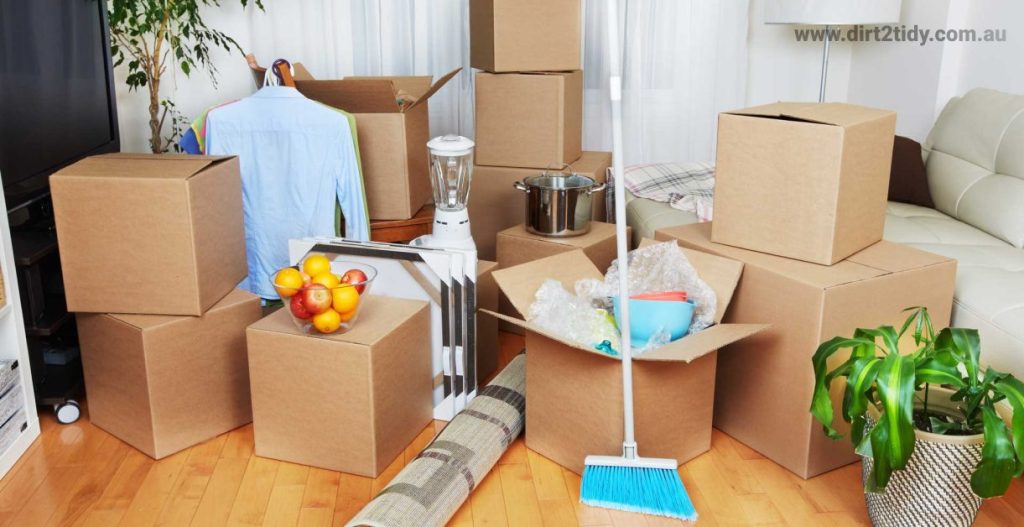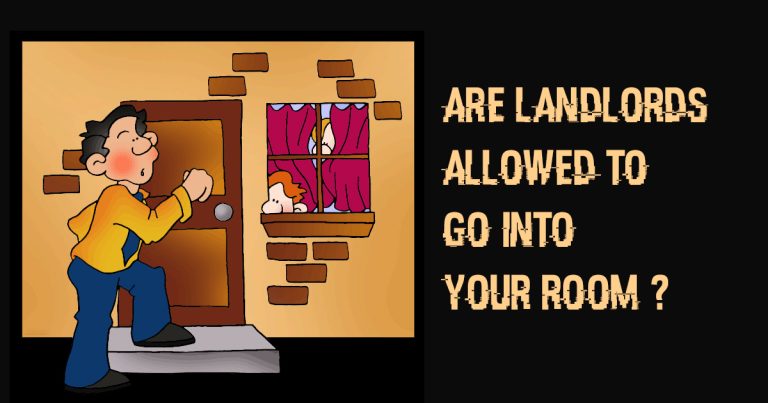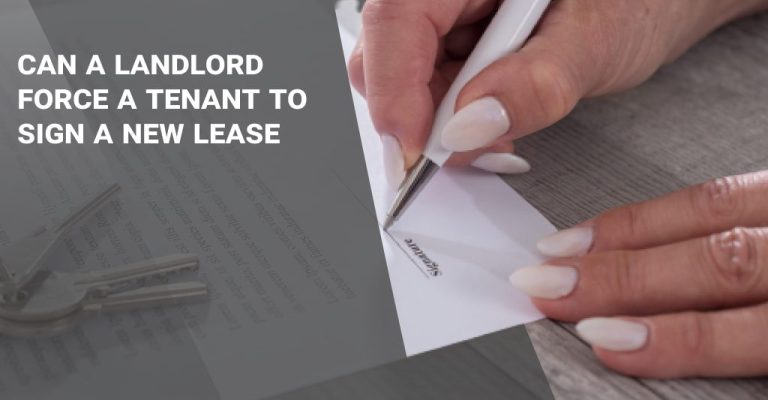Table of Contents
Landlords often run into significant challenges when they have to deal with renters that are messy. The value of a property may decrease if it is plagued by vermin or mould, both of which are brought on by the accumulation of dirt, food, and standing water, Which leads to cleaners to play a role.
If a property is left in an unlivable condition or is extremely unclean, the landlord in some cities and states may be able to charge the tenant for cleaning the property with the bond money.
In this article, we will discuss when it is appropriate for a landlord to charge a tenant for cleaning and when it is not appropriate to do so, as well as provide some pointers on how much a landlord should charge, and offer advice on how to set the right expectations for cleaning with a tenant in order to help avoid conflict if and when the tenant moves out.
Pre-Check Before Charging for Professional Cleaning
The amount of money that should be charged for cleaning a rental property is contingent on a number of different factors, from cleaning carpets to hiring a cleaning company.
For instance, a landlord ought to compare the state of the property when the tenant moved in to the state of the property when they are moving out, and determine whether or not more cleaning is required over and above what may be deemed usual by state laws or tenancy agreements.
What sets general tidiness apart from professional cleaning?
It’s important to distinguish day-to-day tidiness from professional cleaning when assessing tenant responsibilities.
General Tidiness – routine tasks expected from tenants to maintain a presentable home:
- Sweeping and vacuuming floors
- Wiping down surfaces
- Emptying bins
- Light cleaning of sinks and bathroom fixtures
These fall under “reasonable care” and fair wear and tear.
Professional Cleaning – a deeper, more thorough clean often needed at lease end:
- Steam-cleaning carpets
- Scrubbing tiles, grout, and bathroom fittings
- Removing grease from kitchen appliances
- Washing windows (inside/outside, including tracks)
- Cleaning hard-to-reach or rarely attended areas
Professional cleaning uses specialized tools and expertise, going beyond everyday tidiness. Understanding this difference clarifies what tenants can reasonably be charged for at move-out.
Key Details to Include in a Lease or Cleaning Addendum
To prevent confusion or disputes over cleaning, clearly outline expectations in the lease or a cleaning addendum:
- Set Specific Standards: Specify move-out cleanliness vacuumed carpets, wiped surfaces, and spotless bathrooms referencing local tenancy authority guidelines if needed.
- List Potential Charges: Clearly state any cleaning fees or how bond deductions will be calculated for unsatisfactory conditions.
- Define Unacceptable Conditions: Include examples like mould, leftover rubbish, pest issues, wall marks, or stained carpets beyond normal wear.
- Use Photos for Reference: Take dated move-in photos or ask tenants to provide them for a clear visual benchmark.
Clear documentation ensures both landlord and tenant share expectations, reducing the risk of disputes.
Key Questions Before Charging a Tenant for Cleaning
Before deducting cleaning costs, consider these points:
- Does the lease specify tenant cleaning responsibilities, like weekly sweeping or regular vacuuming?
- Were routine inspections conducted to ensure the property remained clean and livable?
- Were any cleaning or maintenance issues documented and communicated to the tenant?
- Does the cleaning required exceed normal wear and tear?
- Are there stains, debris, or intensive cleaning needs in bathrooms or kitchens?
- Is the carpet or flooring condition worse than expected from typical use?
- If pets were present, were pet addendum rules followed, and did they increase cleaning needs?
- How long has the tenant resided in the property?
- Was a non-refundable cleaning fee paid at move-in?
- How does the move-out condition compare to the initial condition report?
- What is a reasonable amount to charge for cleaning based on these factors?
This condensed version keeps it clear, structured, and easy to reference.

Property Care Obligations to Include in the Rental Agreement
When drafting a rental agreement, clearly outline the tenant’s property care responsibilities to avoid disputes and maintain the home. Key obligations may include:
- Routine Cleaning: Regularly sweep, mop, dust, and maintain bathrooms and kitchens to prevent grime and health hazards.
- Outdoor Upkeep: Mow lawns, trim hedges, and clear debris or snow from walkways.
- Air Filter Maintenance: Replace or clean HVAC filters at specified intervals to preserve air quality and equipment.
- Trash Removal: Properly dispose of garbage to prevent pests and odors.
- Basic Preventative Maintenance: Report leaks, replace smoke alarm batteries, and address minor issues promptly.
Including these responsibilities ensures tenants and landlords share clear expectations, promoting a clean, safe, and well-maintained property.
Setting Cleaning Fees in Line with Local Standards
While landlords aren’t professional cleaners, it’s important that any cleaning fees charged are reasonable and in line with local market rates. To determine a fair fee:
- Research local cleaning service rates for similar properties studio, two-bedroom, or larger homes.
- Consider how rates vary by square footage, number of rooms, and bathrooms.
- Account for additional services like oven cleaning or pet-related messes.
Set your fee based on these findings, covering both standard and deeper cleaning needs. This ensures charges are transparent, fair, and easily justified if disputes arise or documentation is needed for the bond refund.
Charge Tenants Multiple Times for Pet Odor Cleaning?
Landlords can deduct reasonable cleaning costs for pet-related stains or odors from a tenant’s bond, as long as the expenses exceed normal wear and tear and are well-documented.
However, repeated charges for the same unresolved issue aren’t generally justified unless new damage occurs after each cleaning. Deductions should cover what’s necessary to return the property to its original move-in condition.
To avoid disputes:
- Keep photographs, professional cleaning invoices, and inspection reports.
- Communicate clearly with tenants about cleaning obligations.
- Follow guidelines from your local tenancy authority if questions arise.
Key takeaway: Landlords can claim for extra cleaning, but multiple charges for a single ongoing issue require clear evidence of additional damage.
Determining a Fair Hourly Cleaning Rate
Setting a reasonable hourly cleaning rate for your rental property requires research and practicality.
Steps to Determine Your Rate:
- Check Local Rates: Review what cleaning companies like Jim’s Cleaning or Fantastic Services charge for similar properties. Hourly rates typically range from $50–$100, depending on location and property size.
- Factor in Costs: Include time, cleaning supplies, and any special requirements such as pet-related messes or carpet shampooing.
- Compare Quotes: Gather multiple quotes to ensure your rate is fair and competitive.
- Transparency: Clearly communicate how the rate is calculated to tenants to avoid disputes.
By aligning your fee with local standards and being transparent, you ensure fairness while maintaining professionalism.
Why provide your tenant with a cleaning checklist or addendum?
Including a cleaning checklist or addendum in the rental agreement sets clear expectations for move-out cleaning, reducing confusion and disputes.
- Clarity: Lists all areas and tasks floors, bathrooms, appliances so tenants know exactly what’s required.
- Consistency: Ensures standards are uniform, avoiding disagreements over what constitutes a clean property.
- Specific Requirements: Allows you to include tasks like carpet steam-cleaning or duct wiping in writing.
- Smooth Inspections: Provides a reference during move-out checks, making the process quicker and hassle-free.
A well-documented checklist protects both landlord and tenant while keeping move-out responsibilities transparent.
Strategies to Minimize Landlord Cleaning Expenses
Landlords can reduce turnover cleaning costs with proactive planning and clear expectations. Here’s how:
1. Include an Upfront Cleaning Fee
Charge a reasonable cleaning fee in the rental agreement, aligned with local standards, to cover routine turnover cleaning.
2. Clarify Tenant Responsibilities
Spell out regular cleaning duties vacuuming, mopping, outdoor upkeep using a move-in checklist as reference.
3. Document Property Condition
Take photos and notes during the initial walk-through to set a benchmark for move-out inspections.
4. Monitor Over Time
Conduct periodic inspections and request updates from maintenance staff to catch issues early.
5. Partner with Trusted Cleaners
Establish a relationship with a reliable cleaning company for consistent quality and discounted rates.
6. Itemize Cleaning Deductions
If deducting costs from a bond, provide a detailed, compliant breakdown to avoid disputes.
Following these steps helps landlords manage cleaning expenses efficiently while keeping properties well-maintained and tenants informed.
Cleaning up after moving out
The following are items that are often cleaned once a renter vacates:
- Clean the floors with a broom and a mop.
- Carpets need to be vacuumed and cleaned.
- The surfaces of the wood are polished.
- Cleaning the curtains and other flat surfaces
- Cleaning of the interiors of the cabinets and closets
- The cleaning of toilets, sinks, and faucets, as well as mirrors
- Cleaning of appliances, including the refrigerator and the oven
- Housekeeping duties cover the entirety of the dwelling.
- Additional scrubbing is required.
Additional cleaning may be required for single-family rental properties depending on the features and layout of the property, as well as the cleanliness or messiness of the previous tenant:
The Benefits of Arranging a Volume Deal with a Cleaning Service
Landlords managing multiple properties or high-turnover rentals can save time and money by negotiating ongoing agreements with trusted cleaning companies. Key advantages include:
1. Lower Costs: Regular work often earns discounted rates, reducing cleaning expenses compared to one-off bookings.
2. Consistency and Reliability: Using the same provider ensures uniform cleaning standards across all properties, improving tenant satisfaction.
3. Efficient Use of Your Team: Outsourcing routine and deep-cleaning tasks frees maintenance staff to focus on repairs and specialized jobs.
4. Access to Specialist Services: Professional cleaners can tackle tough tasks like heavy appliance cleaning, ductwork, and stubborn grime.
A volume deal keeps your rentals clean, welcoming, and ready for tenants often at a fraction of standard rates.
Cleaning Tasks Beyond Normal Wear and Tear
Some cleaning responsibilities go beyond regular upkeep and may require additional effort or professional help, especially after a tenant’s occupancy:
- Carpets: Deep cleaning or repairs if damage exceeds normal wear and tear.
- Chimney, Basement, and Attic: Sweep and clean areas used by the tenant.
- Pools and Spas: Thorough cleaning and chemical treatment as needed.
- Exterior Surfaces: Pressure-wash garage floors, driveways, walkways, and other surfaces to remove grease or stains.
- Gutters and Downspouts: Clear accumulated debris, particularly if tenant was responsible for landscaping.
- HVAC System: Clean air filters and ducts to remove dust and pollen buildup.
- Yard and Storage Areas: Remove rubbish or leftover items from backyard and storage spaces.
For extensive cleaning, consider hiring a professional cleaning company or consult your real estate agent for recommended services.

When Can a Landlord Evict a Tenant for Uncleanliness?
Eviction for uncleanliness is reserved for serious cases where the property becomes unsafe or unsanitary. Everyday messes like scattered clothes or dirty dishes don’t justify eviction.
Situations that may warrant action include:
- Severe mold growth in damp areas (bathrooms, basements)
- Standing water causing structural damage or flooding
- Accumulated human or pet waste
- Damage from unsafe practices, like indoor fires
Essentially, the property must pose clear health or safety risks, and landlords should document all evidence before pursuing eviction. Normal clutter or minor messes are not sufficient grounds.
Can a Tenant’s Security Deposit Cover Cleaning Costs?
Yes, but only under certain conditions:
- Exceeding Normal Use: If cleaning costs go beyond what’s considered “regular wear and tear,” landlords may deduct reasonable expenses from the security deposit.
- Uninhabitable Condition: If a tenant leaves the property in an unsafe or unlivable state, landlords may pursue additional costs in court.
- Follow Local Rules: Always check city and state landlord-tenant laws to determine which cleaning expenses can legally be deducted.
- Documentation is Key: Keep detailed records move-in walkthrough photos, inspection notes, and receipts. Without proper documentation, landlords risk disputes or penalties in court.
- Security Deposit Isn’t Income: Security deposits should not supplement a landlord’s income. Returning the deposit promptly reduces conflicts and avoids legal issues.
- Lease Clarity: Include a clause specifying that tenants are responsible for maintaining the property’s cleanliness during their tenancy.
Proper documentation and adherence to legal guidelines protect both landlords and tenants while ensuring fair handling of cleaning deductions.
Documenting Tenant Cleaning Obligations Before Move-Out
To avoid disputes, landlords should clearly outline tenant cleaning responsibilities in the rental agreement. Include a detailed cleaning clause or addendum that specifies tasks such as:
- Cleaning appliances (oven, fridge, etc.)
- Vacuuming and mopping floors
- Deep-cleaning bathrooms
- Dusting vents and duct covers
If certain services are required like carpet steam cleaning state this in writing and provide a move-out cleaning checklist.
Keep requirements realistic and fair. While tenants may not handle jobs like gutter cleaning or pool maintenance, it’s reasonable to expect them to arrange professional end-of-lease cleaning services instead of paying a separate cleaning fee.
This approach ensures clarity, prevents misunderstandings, and makes the move-out process smoother for both landlords and tenants.
Steps to Take If a Tenant Challenges Cleaning Deductions
If a tenant disputes cleaning charges, stay organized and prepared:
- Gather Documentation: Include move-in and move-out photos showing the property’s condition.
- Keep a Cleaning Log: Record dates, tasks completed, and time spent.
- Collect Receipts: Include any professional cleaning services used.
- Document Communication: Save emails or messages about cleanliness expectations.
Being thorough demonstrates good faith and provides strong evidence if the dispute escalates to small claims court, increasing your chances of a favorable outcome.
Properly Itemizing Cleaning Deductions from the Security Deposit
If you decide that cleaning charges need to be withheld from a tenant’s security deposit, it’s crucial to proceed carefully and transparently. Always check your local regulations first different cities and states often set strict rules about how and when deductions can be made.
Here’s what you should do:
- Know your limits: Find out the maximum amount you’re permitted to deduct for cleaning costs. Some states cap this amount or define what counts as an allowable expense.
- Meet the timeline: There are deadlines for both providing a deduction statement and returning any remaining deposit to the tenant. Don’t let these dates slip by.
- Be specific: Prepare a detailed breakdown that shows exactly what cleaning tasks were necessary and the cost for each one. For example:
- Carpet steam cleaning – $80
- Oven deep clean – $50
- Window washing (inside & out) – $40
Offering a transparent, itemized list not only fulfills legal obligations but also helps prevent disputes. Tenants are less likely to challenge deductions when they can clearly see where their money went and when the costs reflect reasonable, documented work.
Charging Tenants for Cleaning vs. Normal Wear and Tear
Landlords can charge tenants for cleaning required to restore the property to its original condition at move-in. However, they cannot charge for regular wear and tear or use the tenant’s security deposit to cover routine deterioration that naturally occurs with normal use.
This distinction ensures that tenants are only responsible for excessive mess or damage, not the expected effects of everyday living.
Your home deserves the best care! Schedule your professional clean today and enjoy a fresh, welcoming space.




